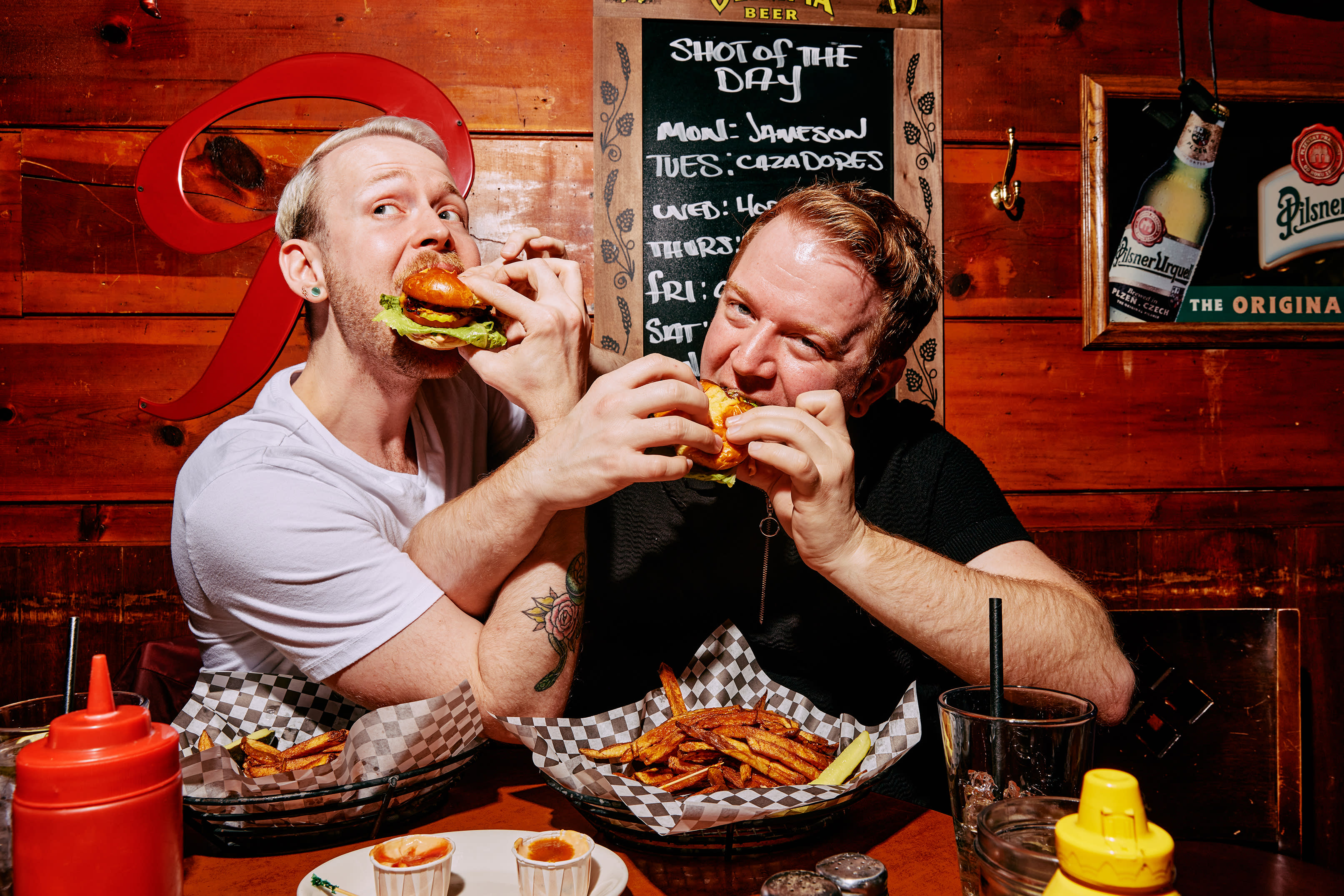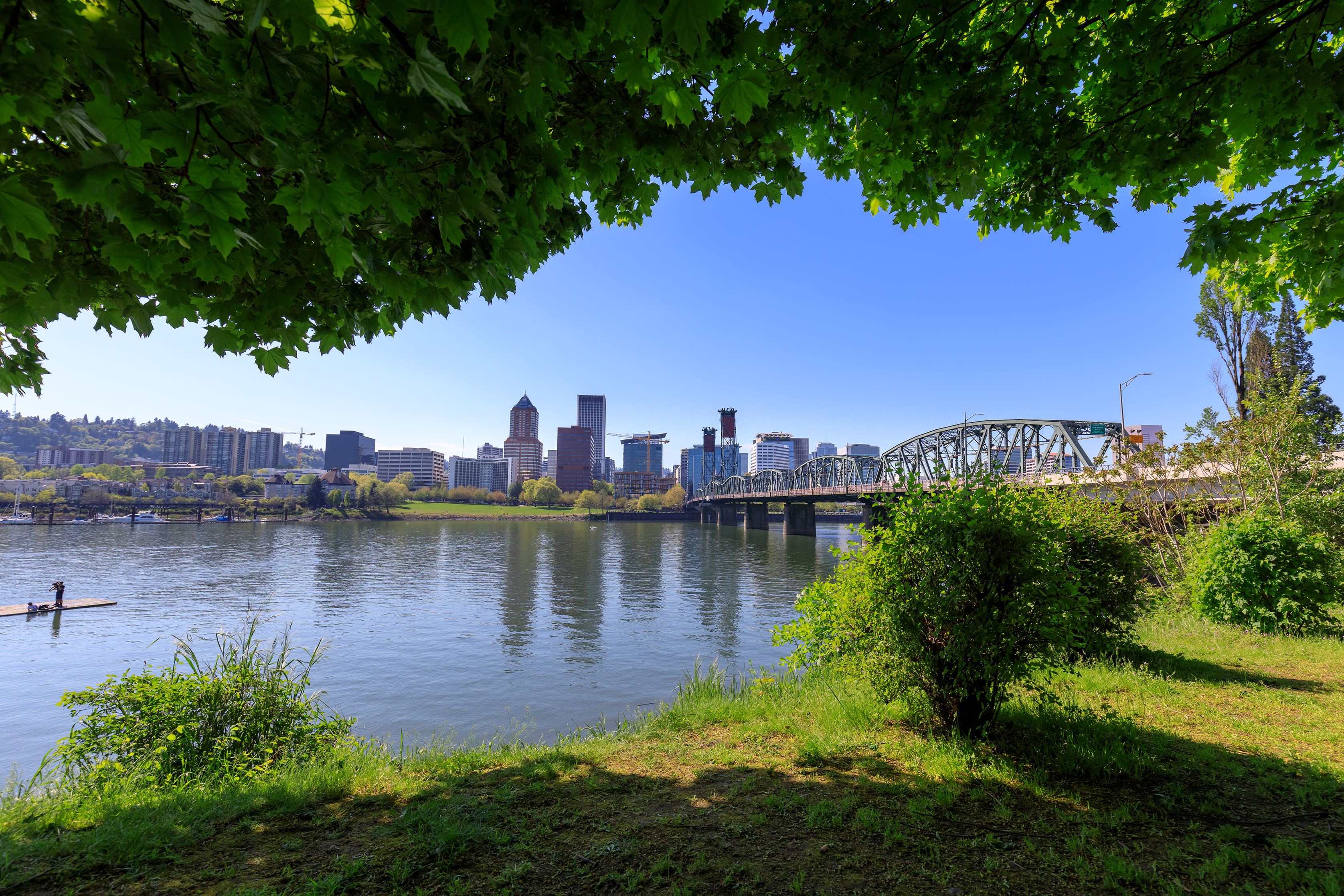Can This Radical Plan Reinvent the Rose Quarter?

Rukaiyah Adams, chair of the Albina Vision Trust
Image: William Anthony
The east end of the Broadway Bridge should be a Portland hotspot. Here, several neighborhoods converge, and a historic span disgorges thousands daily aboard cars, buses, and streetcars, on foot, and on bike after bike.
Instead, it’s both traffic-choked and dead. Warehouses and worn motels line Broadway’s north side. The Moda Center and Memorial Coliseum loom to the south, behind a cordon of parking structures and surface lots. In a city that prides itself on urban design, this is a massive fail.
“It seems to reflect only the needs of the entertainment complexes,” says Zari Santner, former city parks director and current city Design Commission member. “It’s completely car-oriented.”
It wasn’t always like this. And Santner and a few allies argue it doesn’t have to be.
The area around this end of the bridge once formed the southern end of Albina. After World War II and the 1948 Vanport flood, Portland’s black community coalesced here, amid jazz clubs, black-owned businesses, and residences. But midcentury “urban renewal”—Memorial Coliseum, interstate highway and hospital construction, the city’s policies against “blight”—dismantled all that. (One 1958 aerial photo shows a ghostly grid of razed streets during construction.) Moda Center, né Rose Quarter, came in 1995—another urbanist miscue, a blob of oft-desolate plazas and garages.
Now enter Albina Vision: a complex, community-born proposal to create a dense, diverse, affordable new neighborhood around Memorial and Moda. Rukaiyah Adams, chief investment officer for Meyer Memorial Trust, has emerged as the idea’s most prominent voice.
“Decades of intentional design decisions choked the vitality out of Lower Albina,” the 45-year-old Portland native says. “We designed the intentional displacement of whole communities. We designed highway systems that prioritized automobile transit. [Now] we must also intentionally design inclusion and connectivity.”

An aerial view of the Broadway Bridge and old Albina neighborhood in 1948
Adams sits on Albina Vision Trust’s board, along with Santner, former Urban League CEO Michael Alexander, developer Tom Cody, and former Northwest Natural CEO Gregg Kantor. Influential people. But Albina Vision—a concept that, if realized, would transform 94 acres—is pitched outside the city’s established planning processes, and so faces long political odds. Add complex factors like freeways, transit, Portland Public Schools’ huge headquarters site, and two sports arenas (not to mention baseball fantasies) and Albina Vision could easily remain a vision.
But the effort does have two notable assets: conviction and, as Adams suggests, bold design.
Albina Vision evolved, starting in 2014, from discussions about the area as a whole. The Portland Trail Blazers and many others were initially involved. The smaller trust group emerged in spring 2017, distilling those talks into broad strokes.
Santner, a 70-year-old who emigrated from Iran in 1969, describes Albina’s imagined rebirth revolving around a few key moves. The existing stadium parking structures would be replaced and moved underground, allowing Broadway to become a commercial and residential main street, like Hawthorne or Division. The area’s southern end, around the two arenas, would mix public space, high-rise development, and new amenities. (“There are two large civic buildings already there,” she notes. “A major performing arts venue could join them.”)
North of Broadway, a lower-rise neighborhood would extend up to N Tillamook Street. Replacing the PPS HQ with nine (yes, nine—it’s that big) new city blocks is a linchpin here. The riverfront would become civic space—a new waterfront park, designed around existing rail lines. Capping freeway ravines with lids robust enough to support buildings could knit it all together.
“These are not new ideas,” Santner says of the design concepts. “They go back to the Middle Ages. These are the urban principles that work.”
To illustrate those ideas, the trust engaged respected local architecture firm Hennebery Eddy. “Like all good projects, it started with a scratchy voicemail,” principal Tim Eddy recalls. The firm spun the design ideas into lush, evocative renderings, imagining sleek new buildings and vibrant streets taking the place of the real-life wasteland. Eddy’s team included a memorial to the Great Migration, and took care—with prompting by the trust—to forecast a multicultural community. When a sketch of a riverside beer garden seemed too hipster, the rendering became a teeming family-friendly park under a bosk of trees.

Albina Vision’s eastside renderings show a diverse, pedestrian-friendly new neighborhood
The images are essentially inspirational urbanist speculative fiction: a Portland that could be. That these specific buildings might never be built is not exactly the point.
“We’re looking to create another tool to carry the idea forward,” Eddy says. “How do you make this unbreakable?”
Another piece of 21st-century armor: a brand. Lawrence Teherani-Ami, a Wieden & Kennedy media director and Portland native, participated in the early Rose Quarter discussions, then recruited a pro bono WK team. “Most of our clients aren’t in Oregon,” Teherani-Ami, 54, says. “We’re not always part of the bigger community discussion, so I was thrilled.”
Interestingly, the would-be name was subject to early discussion. “Where should we pull the narrative from?” recalls Jason Campbell, a 37-year-old creative director originally from Jamaica and familiar with history-erasing gentrification from stints in New York and San Francisco. “We realized we were already sitting on it, with the name and history of Albina.”
Danielle McCoy, a 26-year-old junior designer from Antigua and Barbuda who moved to Portland to join WK in 2015, felt drawn to the project. “When you’re a transplant, you’re here for a specific reason, but don’t always feel like part of the larger community,” she says. With vintage Blue Note Records covers as a touchstone, she modified the sans serif typeface Van Condensed Bold to create an all-caps “ALBINA” mark, a striking modern/classic hybrid.
“The task was to make it strong, but inject levity,” McCoy says. “That’s what the community was.”
The question of what this place could be, of course, awaits an answer, and might for decades. Adams and her fellow advocates face daunting obstacles. They are responding with creativity—plotting their own independent master plan, for example, and designing a trust-based financing vehicle that could allow future residents to make modest investments in development. “I think about someone like my mom, who couldn’t afford a 20 percent down payment on a house,” Adams says. “What if she could have invested in Portland real estate anyway?”
Many challenges lie ahead for the Albina Vision: for one thing, realizing the plan as a whole would require a massive alignment of long-term planning processes, from local to federal. But behind it all lies a compelling argument about how a rapidly changing city could and should develop, and whom and what development should serve.
“There aren’t many opportunities to address density, affordability, and how we’ve treated each other, our neighborhoods, and our river,” Adams says. “This is it.”
“That was a driving motivation here,” WK’s Campbell adds. “How do we do this in a way that’s inclusive and respectful? It’s a dream of what a place could be.”




